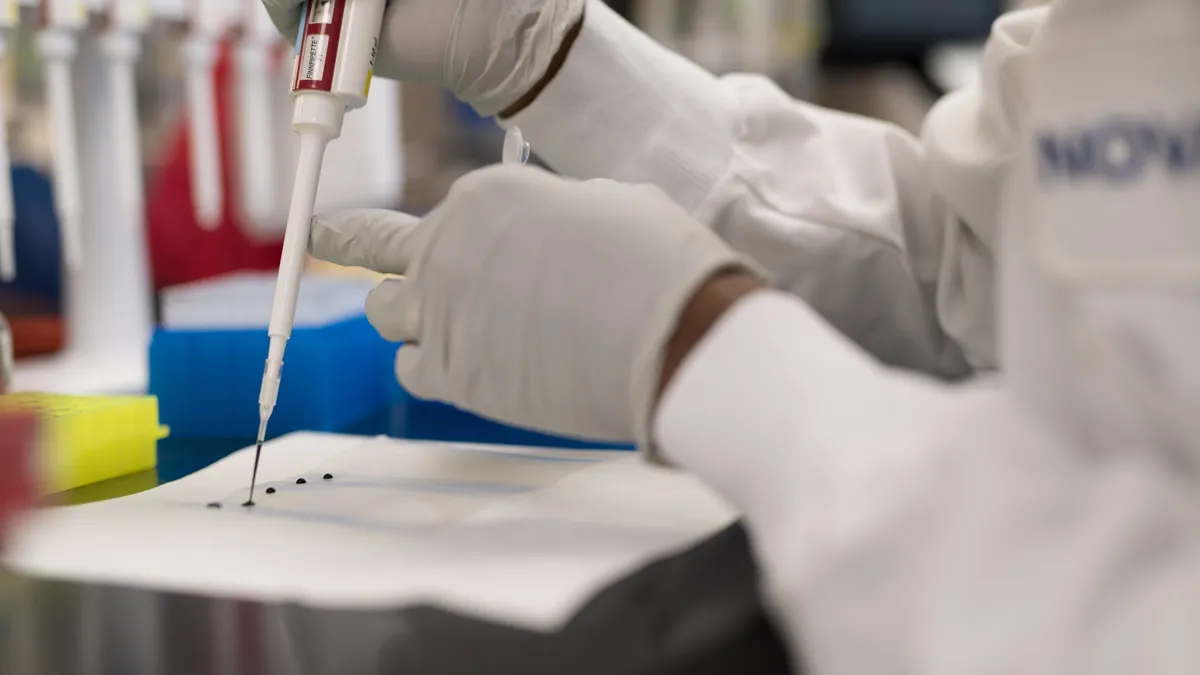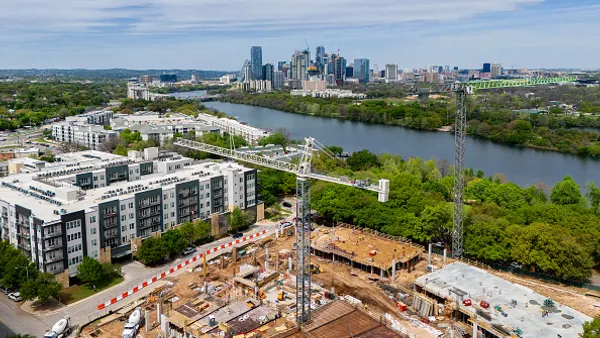Dive Brief:
- Presentation materials from a Centers for Disease Control and Prevention committee meeting Tuesday put essential workers second in line for who should get the first doses of COVID-19 vaccine, but did not specifically mention construction workers.
- The CDC’s Advisory Committee on Immunization Practices voted Tuesday to recommend that the nation’s 21 million healthcare workers and 3 million residents and staff of long-term care facilities receive the first limited supplies of COVID-19 vaccines during what’s known as "Phase 1a" of distribution.
- But essential workers were presented as potential recipients in the next tier, Phase 1b, with examples that included workers in education, food and agriculture, utilities, firefighters, correction officers and transportation. While construction and construction workers have been considered essential in most parts of the country during the pandemic, the industry was not listed by name.
Dive Insight:
Brian Turmail, vice president of public affairs at the Associated General Contractors of America (AGC), which advocates on behalf of the construction industry, said in an email he wasn't concerned with a lack of a specific mention of construction as essential in the ACIP's presentation slides. "Those are just examples," he said.
If accepted by Dr. Robert R. Redfield, the director of the CDC, the ACIP’s recommendation would become the agency’s formal guidance to states on how to distribute the first available doses of the vaccine, which could be given as soon as two weeks from now, according to some news reports.
ACIP’s prioritization of healthcare and long-term care workers and residents, as well as the inclusion of essential workers in Phase 1b in the committee’s slide presentation, closely echoes recommendations made in mid-October by the AGC.
Stephen Sandherr, the trade group’s CEO, wrote letters on Oct. 15 to President Donald Trump and then candidate Joe Biden, who is now president-elect, outlining its hopes for a vaccine distribution plan.
Sandherr lobbied for a nationwide plan that would avoid the hiccups and confusion that have been hallmarks of the pandemic response in the United States, where various state, county and city regulations have muddled efforts to contain the virus.
“The federal plan should prioritize the rational distribution of vaccinations, based on risk and need,” Sandherr wrote. “In the process, it should ensure that vaccinations are distributed to the same groups, in the same order, throughout the country. It should also preclude a patchwork of conflicting, confusing and time-consuming priorities that vary from state to state.”
He advocated for vulnerable populations and healthcare workers to receive vaccines first, but said that "other essential workers who cannot work from home, such as construction workers, should quickly follow."
“While the construction industry has gone to great lengths to protect its workers from the coronavirus, and it has been very largely successful, its workers merit priority over other essential workers who have the option of working remotely.”
A recent study found that construction workers in Austin, Texas, were five times more likely to be hospitalized with COVID-19 than other workers, with one reason being that they leave their homes to go to work.
Sandherr also wrote about the risk of officials shutting down businesses ahead of a vaccine arriving, a concern that is widespread among contractors as coronavirus cases surge to their worst levels of the pandemic across the country.
“AGC perceives a risk that public officials may demand or require even essential businesses to shut down until the vaccines are widely distributed,” Sandherr wrote. “Such shutdowns would inflict additional hardships on countless workers and their families.”
Turmail said ACIP’s plan was mostly in line with what the organization hoped for.
“At first glance, their recommendations appear consistent with what we suggested,” Turmail said. “But we still urge the administration to do more to ensure a consistent approach throughout the country.”
Redfield, the CDC director, is expected to decide on the committee’s initial recommendation today.














